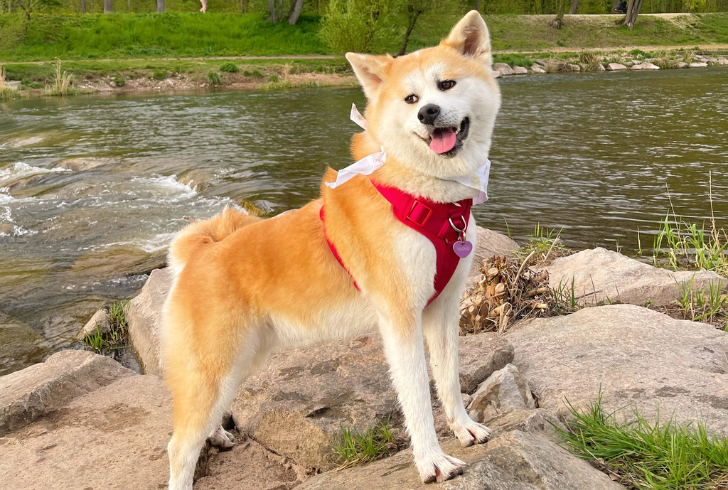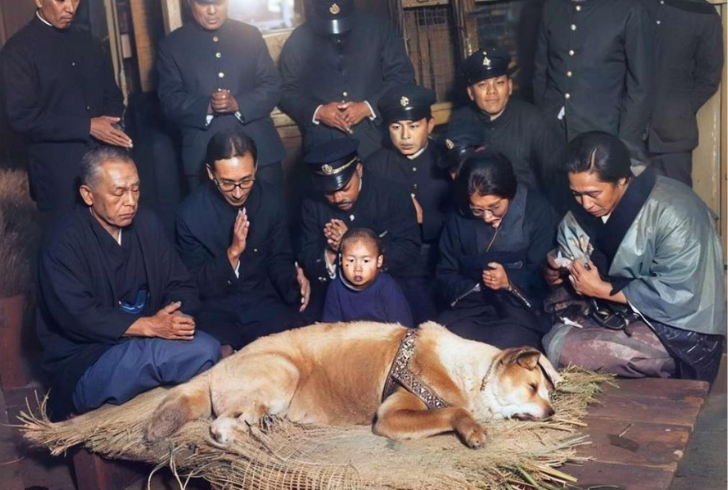In the heart of Tokyo, Hachikō quietly became a worldwide symbol of loyalty. Affectionately called Hachi, he waited at the same train station every day for nearly a decade for his owner, who never returned. His story is remembered not just for his dedication but also for the Akita Inu breed to which he belonged.
Akitas are native to Japan and celebrated for their courage, intelligence, and loyalty. They make a striking impression with fox-like faces, curled tails, and dense double coats. Calm and stoic in appearance, they are nonetheless affectionate with their families. They may be independent and selective with other animals, but their connection to humans is profound.
The breed adapts well to apartment life and doesn’t need endless exercise, while their thick fur suits cold climates. Health concerns include hip dysplasia, autoimmune issues, bloat, and certain eye disorders. Most Akitas weigh 70 to 130 pounds and live 10 to 14 years with proper care.

Instagram | lulu.the.akita | Hachiko’s story found its way to the cinema as well.
Hachi’s Life and Legacy
Hachi was born in 1923 in Ōdate, Japan, and a year later was adopted by Professor Hidesaburō Ueno of the University of Tokyo. Every morning, Hachi would follow Ueno to Shibuya Station and wait there until evening, a daily ritual that revealed a profound bond between man and dog.
Sadly, in 1925, Professor Ueno passed away suddenly from a cerebral hemorrhage while at work. But Hachi kept showing up at the station every day, patiently waiting for his owner’s return. He did this not for a few weeks or months, but for nine years.
He became a fixture at Shibuya Station. Local commuters and shopkeepers began noticing the dog who waited alone, and his story eventually reached national headlines. A 1932 article in Tokyo Asahi Shimbun brought him to public attention, and soon Hachi wasn’t just a loyal dog—he was a national symbol of devotion.

Instagram | aplasticplant | The famous Akita Hachi is memorialized with a statue and preserved remains, buried next to his owner.
After Hachi passed away in 1935, his legacy continued. His remains were buried next to Professor Ueno, reuniting them at last. Today, a bronze statue of Hachi still stands outside Shibuya Station as a tribute. Inside the National Science Museum in Tokyo, his preserved fur can still be seen by visitors who want to learn more about his legacy.
His story found its way to the cinema as well. The 1987 Japanese film “Hachikō Monogatari” brought his journey to life for native audiences. Years later, the tale was retold for international viewers in “Hachi: A Dog’s Tale,” where Richard Gere played a character inspired by Ueno. Though the setting shifted to the U.S., the bond and heartbreak remained the same—reminding viewers everywhere of a dog’s unmatched loyalty.
Hachi wasn’t just any dog. He was an Akita—one of the few breeds capable of such profound attachment and instinctive commitment. His daily vigil wasn’t about habit. It was about love, loss, and loyalty that spanned nearly a decade. And that’s what continues to resonate with people across cultures, decades later.
From the bronze statue in Tokyo to his story on the big screen, Hachi’s legacy endures as a symbol of loyalty and as a quiet ambassador for a breed defined by strength, respect, and heart.